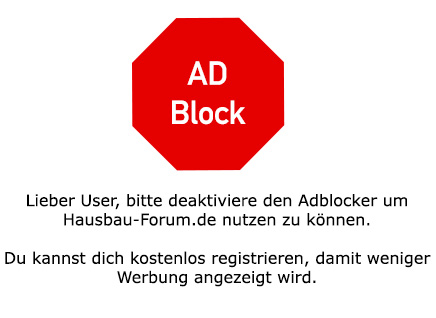Domski
2018-01-12 13:47:09
- #1
Once again for understanding:
- You have a recess in the screed and insulation for the chimney.
- The recess was filled with thinner insulation and thicker screed.
- The recess was too small, was enlarged, and the enlargement then presumably filled with cement screed.
That means you also have a floating screed under the chimney, just executed more heavily than the screed in the rest of the room?
If that is the case, you now need three things:
- Proof of decoupling of both areas by a joint (usually by edge insulation strips)
- Proof of the tensile bending strength of the entire chimney screed slab (up to the edge areas!)
- Load distribution of the chimney and total weight
Since, in my opinion, the strength of the screed cannot be proven with this patchwork, I would do the following:
- Take the structural drawing of the chimney at hand, showing the points of the superimposed load. Presumably once around the outside and in the middle no load at all?
- Refuse the acceptance of the screed construction by the screed installer/general contractor. Presumably the highest load is in the edge areas, and there the screed is weakest anyway...
- Remove everything and build the base as described by Klara.
Regards,
Markus
- You have a recess in the screed and insulation for the chimney.
- The recess was filled with thinner insulation and thicker screed.
- The recess was too small, was enlarged, and the enlargement then presumably filled with cement screed.
That means you also have a floating screed under the chimney, just executed more heavily than the screed in the rest of the room?
If that is the case, you now need three things:
- Proof of decoupling of both areas by a joint (usually by edge insulation strips)
- Proof of the tensile bending strength of the entire chimney screed slab (up to the edge areas!)
- Load distribution of the chimney and total weight
Since, in my opinion, the strength of the screed cannot be proven with this patchwork, I would do the following:
- Take the structural drawing of the chimney at hand, showing the points of the superimposed load. Presumably once around the outside and in the middle no load at all?
- Refuse the acceptance of the screed construction by the screed installer/general contractor. Presumably the highest load is in the edge areas, and there the screed is weakest anyway...
- Remove everything and build the base as described by Klara.
Regards,
Markus
